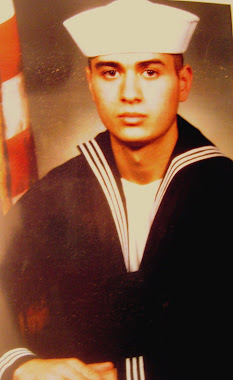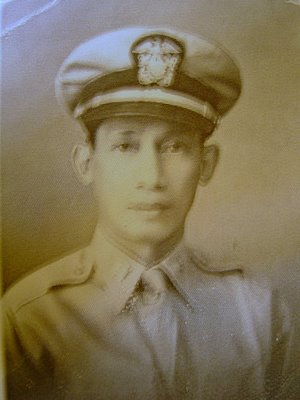The 2003 invasion of Iraq lasted from 20 March to 1 May 2003 and signaled the start of the Iraq War, which was dubbed Operation Iraqi Freedom by the United States (prior to 19 March, the mission in Iraq was called Operation Enduring Freedom, a carryover from the War in Afghanistan).The invasion consisted of 21 days of major combat operations, in which a combined force of troops from the United States, the United Kingdom, Australia and Poland invaded Iraq and deposed the Ba'athist government of Saddam Hussein. The invasion phase consisted primarily of a conventionally fought war which concluded with the capture of the Iraqi capital of Baghdad by American forces.
As I write this in the early part of 2012, it is a safe assumption that most Americans carry a suspicion, however slight, toward the reasons that they were told the U.S. needed to invade Iraq back in 2003. It is simply not possible to explain the depths of the corruption that exist at the highest levels of government today. Those who have bought into the mainstream media’s portrayal of the American government as an institution who seeks the common good, they do well to recall the words of America’s own first national leader:
“Government is not reason; it is not eloquent; it is force. Like fire, it is a dangerous servant and a fearful master.” (President George Washington)
With that quote as a backdrop, let us dig deeper into our original question: Why did the U.S. appear so eager to launch an unprovoked war against Iraq? And why did the U.S. begin hatching these war plans many months prior to the events of September 11?
After all, many other nations around the world have confirmed stockpiles of dangerous weapons. So why did the United States specifically target Iraq so soon after the Afghanistan invasion of 2001?
Did the U.S. have some other motivation for seeking international support to invade Iraq?
William R. Clark was among those who questioned the status quo answers and Washington’s stated motives regarding the invasion of Iraq. In his book, Petrodollar Warfare, Clark claims that the 2003 U.S.-led invasion of Iraq was not based upon “violence or terrorism, but something very different, yet not altogether surprising – declining economic power and depleting hydrocarbons.”
Clark’s work was heavily influenced by another author named F. William Engdahl and his book, The Century of War: Anglo-American Oil Politics and the New World Order.
According to research conducted by both Clark and Engdahl, the U.S.-led invasion of Iraq was not exclusively motivated by Iraq’s connection to the terrorist groups who masterminded the 9/11 attacks. Nor was it out of concern for the safety of the American public or out of sympathy for the Iraqi people and their lack of freedom or democracy.
Instead, Clark and Engdahl both claimed that the U.S.-led invasion was inspired predominantly by Iraq’s public defiance of the petrodollar system.
According to page 28 of Clark’s book:
“On September 24, 2000, Saddam Hussein allegedly “emerged from a meeting of his government and proclaimed that Iraq would soon transition its oil export transactions to the euro currency.”
Not long after this meeting, Saddam Hussein began preparing to make the switch from pricing his country’s oil exports in greenbacks to euros. As renegade and newsworthy as this action was on the part of Iraq, it was sparsely reported in the corporate-controlled media.
Clark comments on the limited media coverage on page 31 of his book:
“CNN ran a very short article on its website on October 30, 2000, but after this one-day news cycle, the issue of Iraq’s switch to a petroeuro essentially disappeared from all five of the corporate-owned media outlets.”
By 2002, Saddam had fully converted to a petroeuro – in essence, dumping the dollar.
On March 19, 2003, George W. Bush announced the commencement of a full scale invasion of Iraq.
While attention has been focused on the controversial killing of the insurgent by a marine, American forces are still battling rebels across Fallujah. Yesterday, India Company of the 3rd battalion, 5th Marines fought for more than six hours, just south of the main road, after they were fired on in the Byzantian district. It was a fierce clash - in which the marines took several casualties.
The footage shows US Marines facing a resistance while advancing through the narrow streets of the one of the neighbourhoods of Fallujah. The insurgent fire is neutralised and they continue with their house to house clearing activity. Throughout the day, Americans hit the militants with artillery and mortars, and warplanes fired on the city's main street and market as well as the insurgent stronghold of Jolan, one of several neighbourhoods where troops were skirmishing with militants. At least 71 militants had been killed by early Wednesday, the third day of intense urban combat, the military said. As of Tuesday night, 10 US troops and two members of the Iraqi security forces had been killed. Marine reports on Wednesday said 25 American troops and 16 Iraqi soldiers were wounded. There was no new report Wednesday on US military deaths. Fallujah, 40 miles (64 kilometres) west of Baghdad, is the centrepiece of the Sunni Muslim insurgency that has stymied US efforts to secure Iraq and prepare for national elections that are scheduled for January. Most of Fallujah's 200,000 to 300,000 residents are believed to have fled the city before the US assault. Civilian casualties in the attack are not known, though US commanders say they believe the numbers are low.
While attention has been focused on the controversial killing of the insurgent by a marine, American forces are still battling rebels across Fallujah. Yesterday, India Company of the 3rd battalion, 5th Marines fought for more than six hours, just south of the main road, after they were fired on in the Byzantian district. It was a fierce clash - in which the marines took several casualties.
The footage shows US Marines facing a resistance while advancing through the narrow streets of the one of the neighbourhoods of Fallujah. The insurgent fire is neutralised and they continue with their house to house clearing activity. Throughout the day, Americans hit the militants with artillery and mortars, and warplanes fired on the city's main street and market as well as the insurgent stronghold of Jolan, one of several neighbourhoods where troops were skirmishing with militants. At least 71 militants had been killed by early Wednesday, the third day of intense urban combat, the military said. As of Tuesday night, 10 US troops and two members of the Iraqi security forces had been killed. Marine reports on Wednesday said 25 American troops and 16 Iraqi soldiers were wounded. There was no new report Wednesday on US military deaths. Fallujah, 40 miles (64 kilometres) west of Baghdad, is the centrepiece of the Sunni Muslim insurgency that has stymied US efforts to secure Iraq and prepare for national elections that are scheduled for January. Most of Fallujah's 200,000 to 300,000 residents are believed to have fled the city before the US assault. Civilian casualties in the attack are not known, though US commanders say they believe the numbers are low.
Sixteen years ago, the U.S. and its allies invaded Iraq on the premise that the country was hiding weapons of mass destruction. Despite worldwide protest and a lack of UN authorization, 200,000 thousand troops deployed into Iraq in March of 2003, following massive airstrikes. The coalition faced minimal opposition, and Baghdad quickly fell. For years after President George W. Bush's "mission accomplished" speech, the war raged on, fueled by sectarian conflicts, al Qaeda insurgencies, outside agencies, and mismanagement of the occupation. Ten years later, we look back in a three-part series. Today's entry focuses on the March 20, 2003, invasion of Iraq, and the weeks immediately following.




No comments:
Post a Comment